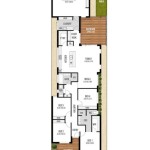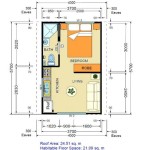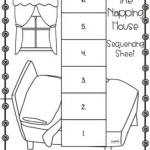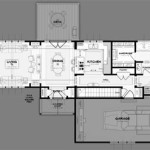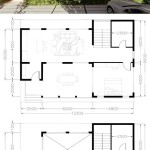Lay Out Plan of Building: A Comprehensive Guide
### Introduction A well-thought-out layout plan is crucial in designing and constructing any building. It serves as a blueprint for the entire project, guiding the placement of rooms, spaces, and various elements within the structure. Whether you're planning a residential home, a commercial building, or a public facility, creating a comprehensive layout plan is essential for ensuring functionality, efficiency, and aesthetics. ### Importance of Lay Out Plan 1.Functionality:
A well-planned layout optimizes the functionality of the building. It ensures that spaces flow seamlessly, creating an efficient and user-friendly environment. For instance, in a house, the kitchen should be conveniently located near the dining area, and bedrooms should be situated away from noisy areas like the living room. 2.Efficiency:
An effective layout plan maximizes space utilization and minimizes wasted areas. It helps in creating compact and efficient designs that accommodate all necessary functions without feeling cramped. This is especially important in smaller spaces or when dealing with specific site constraints. 3.Aesthetics:
A well-conceived layout plan contributes to the overall aesthetics of the building. It helps create visually pleasing spaces that are both functional and visually appealing. By considering factors like symmetry, balance, and proportion, architects can create harmonious designs that are pleasing to the eye. ### Elements of a Lay Out Plan 1.Zoning:
Zoning involves dividing the building into different functional areas or zones. This includes grouping similar activities together and separating incompatible ones. For example, in a house, the public zone (living room, dining area) is usually separated from the private zone (bedrooms, bathrooms). 2.Circulation:
Circulation refers to the movement of people and materials within the building. It includes corridors, hallways, stairs, and elevators. An efficient circulation plan ensures smooth and convenient movement throughout the space. 3.Room Layout:
The layout of individual rooms is crucial for functionality and comfort. Factors to consider include furniture placement, window positions, and the overall flow of the space. For example, in a living room, the seating area should be centered around a focal point like a fireplace or TV. 4.Services and Utilities:
The layout plan should also include the placement of services and utilities such as plumbing, electrical, and HVAC systems. These elements need to be carefully coordinated to ensure efficient operation and maintenance. ### Tips for Creating a Lay Out Plan 1.Consider the Site:
The layout plan should respond to the unique characteristics of the site. Factors like orientation, topography, and existing structures should be taken into account. For instance, if the site has a beautiful view, the living room should be positioned to take advantage of it. 2.Start with a Bubble Diagram:
A bubble diagram is a simple sketch that illustrates the relationships between different spaces in the building. This helps in visualizing the overall organization and flow of the space. 3.Use a Scale Model:
Building a scale model can be helpful in visualizing the layout in three dimensions. This allows for better understanding of spatial relationships and can help identify potential problems early on. 4.Get Feedback:
Involve stakeholders and experts in the layout planning process. Gather their input and feedback to ensure that the plan meets the needs and expectations of all parties involved. 5.Use Technology:
There are software and tools available to assist in creating layout plans. These tools can help with space planning, furniture arrangements, and even 3D visualization. ### Conclusion A comprehensive layout plan is a foundation for successful building design and construction. By considering factors like functionality, efficiency, aesthetics, and site conditions, architects and designers can create spaces that are both practical and visually appealing. Whether it's a residential home, a commercial office, or a public facility, a well-thought-out layout plan sets the stage for a successful and sustainable building.
Floor Plans Types Symbols Examples

Representative Residential Building Layout Plan For Construction In Scientific Diagram

Floor Plans Types Symbols Examples

Floor Plans Types Symbols Examples

House Plans How To Design Your Home Plan

Floor Plan Wikipedia

Floor Plans Types Symbols Examples

Diffe Types Of Residential Building Plans And Designs First Floor Plan House Design

Office Building Layout Work Floor Plan Template

Easy Home Building Floor Plan Cad Pro


